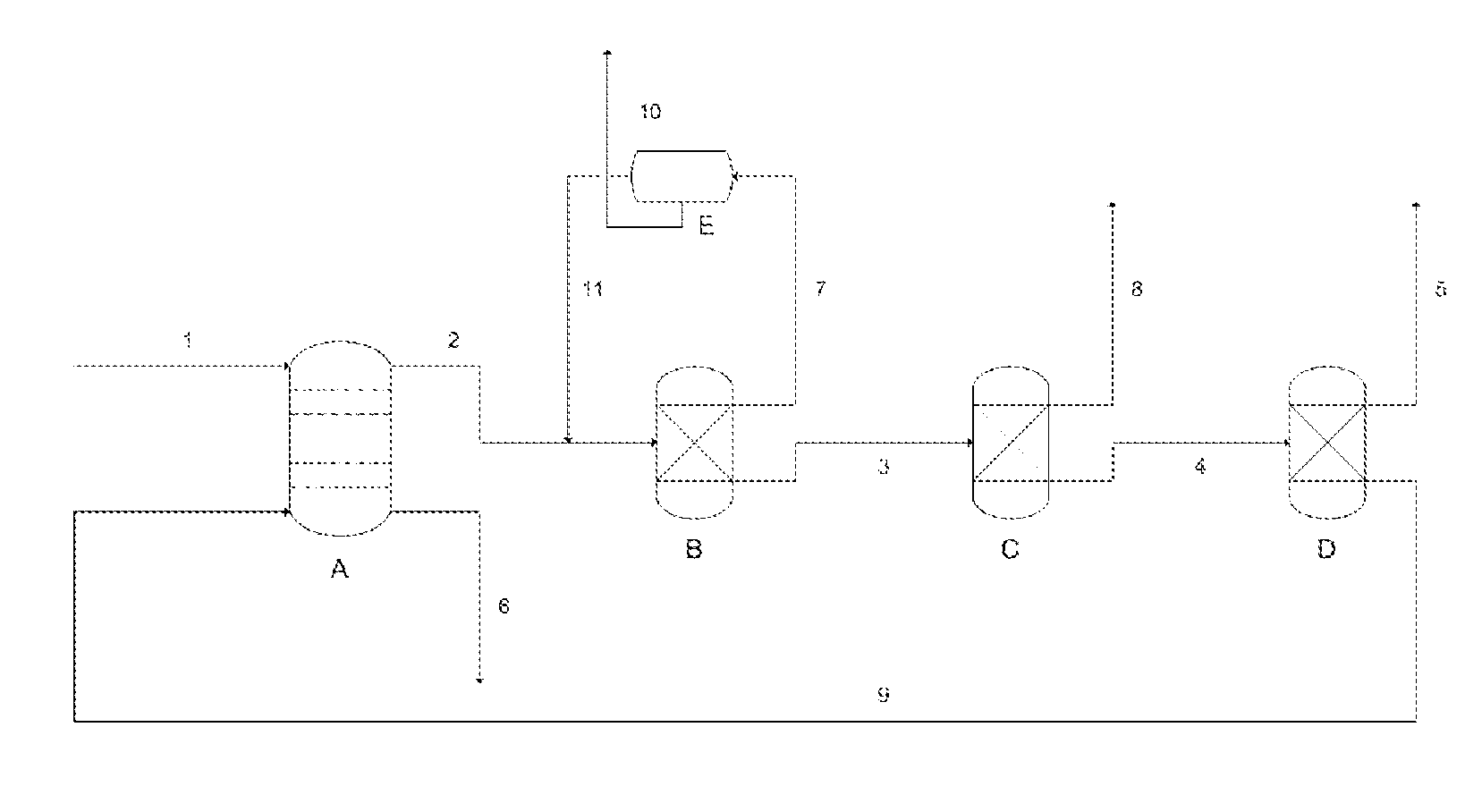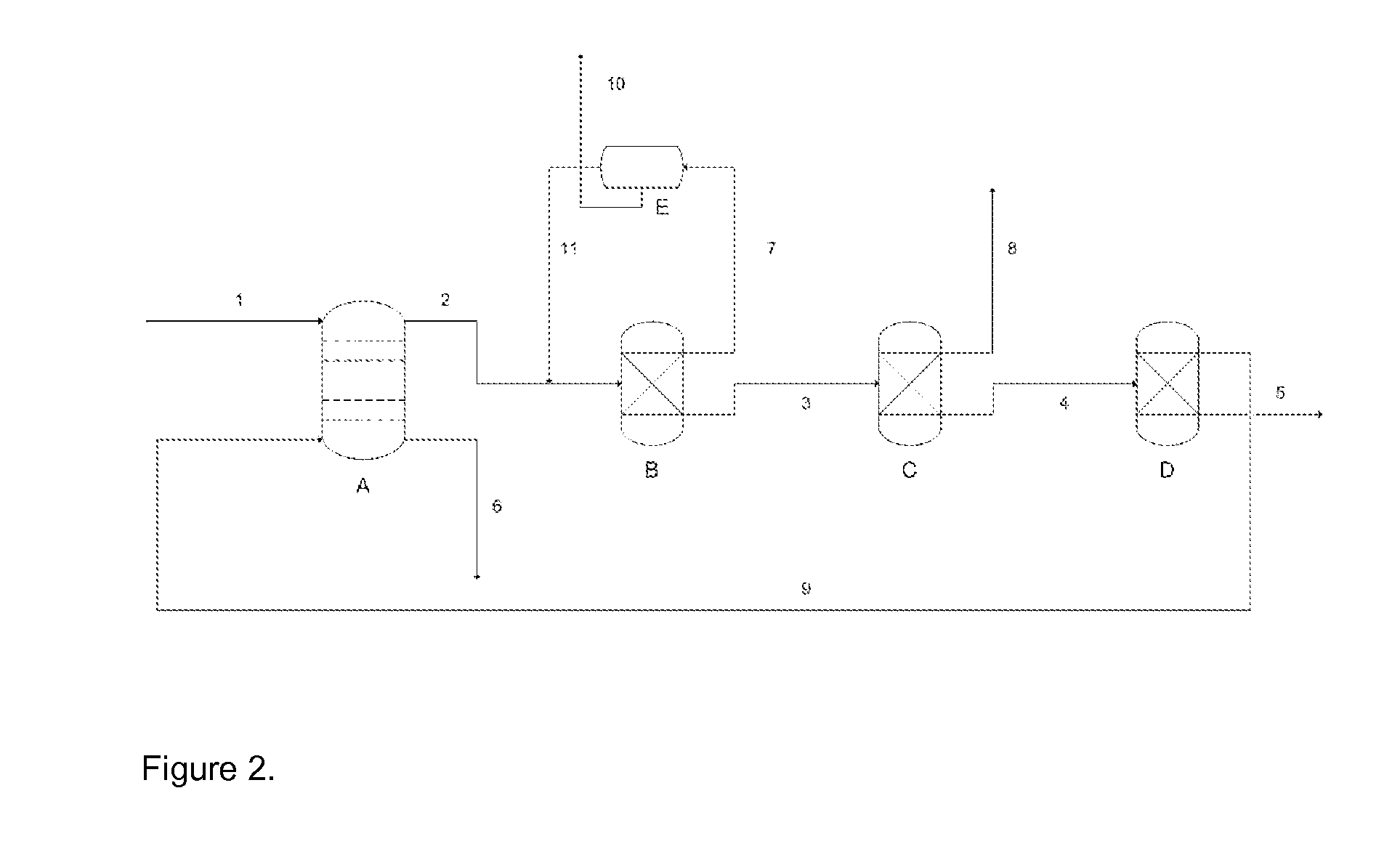Process for recovery of formic acid
a technology of formic acid and recovery process, which is applied in the preparation of carboxylic compound, carboxylic compound separation/purification, organic compound preparation, etc., can solve the problems that the separation of formic acid as a concentrated platform chemical by distillation has been considered neither easy nor energy-efficien
- Summary
- Abstract
- Description
- Claims
- Application Information
AI Technical Summary
Benefits of technology
Problems solved by technology
Method used
Image
Examples
example 1
[0095]An aqueous liquid mixture of 99.12 g from acid hydrolysis of biomass comprising furfural, levulinic acid, formic acid and water was placed in a separating funnel at room temperature. Octanol, 67.14 g was added, and the mixture was vigorously shaken for 5 min. Separation into organic and aqueous phase took place after letting the filtrate stand for 5 minutes (min) and the two phases were removed into separate vessels. The mass of the aqueous phase was 92.26 g and that of the octanol phase was 73.63 g. An analysis of the concentrations is shown in Table 1.
TABLE 1Furfural,Levulinic acid,Formic acid,Water,g / kgsolventg / kgsolventg / kgsolventg / kgsolventOriginal22.4350.6218.811000mixtureAqueous8.140.00.01000phaseOctanol21.6468.2625.4058.12phase
example 2
[0096]An aqueous liquid mixture of 112.57 g from acid hydrolysis of biomass comprising furfural, levulinic acid, formic acid and water was placed in a separating funnel at room temperature. TOF (tris-2-ethylhexylphosphate), 66.63 g was added, and the mixture was vigorously shaken for 5 min. Separation into organic and aqueous phase took place after letting the filtrate stand for 5 min and the two phases were removed into separate vessels. The mass of the aqueous phase was 106.98 g and that of the TOF phase was 71.23 g. An analysis of the concentrations is shown in Table 2.
TABLE 2Furfural,Levulinic acid,Formic acid,Water,g / kgsolventg / kgsolventg / kgsolventg / kgsolventOriginal24.1650.2618.671000mixtureAqueous7.270.00.01000phaseTOF phase26.1077.6928.8618.17
example 3
[0097]A mixture of 1 kg consisting of 168.2 g / kg furfural, 504.3 g / kg levulinic acid, 170.1 g / kg formic acid and 157.4 g / kg water was placed in a batch distillation column. The mixture was boiled at a pressure of 500 mbar and the first fraction at the condenser temperature of 77° C. was collected from the stream from the condenser, and analyzed. This fraction consisted of two separable phases with essentially 100% by weight of furfural, calculated on the basis of organic components.
[0098]Distillation was continued and the second fraction at the condenser temperature of 84° C. was collected. The analysis of this fraction revealed that 94.5% by weight of it was formic acid and 5.5% by weight was furfural as calculated on the basis of organic components.
PUM
| Property | Measurement | Unit |
|---|---|---|
| operating temperatures | aaaaa | aaaaa |
| operating temperatures | aaaaa | aaaaa |
| pressure | aaaaa | aaaaa |
Abstract
Description
Claims
Application Information
 Login to View More
Login to View More - R&D
- Intellectual Property
- Life Sciences
- Materials
- Tech Scout
- Unparalleled Data Quality
- Higher Quality Content
- 60% Fewer Hallucinations
Browse by: Latest US Patents, China's latest patents, Technical Efficacy Thesaurus, Application Domain, Technology Topic, Popular Technical Reports.
© 2025 PatSnap. All rights reserved.Legal|Privacy policy|Modern Slavery Act Transparency Statement|Sitemap|About US| Contact US: help@patsnap.com



